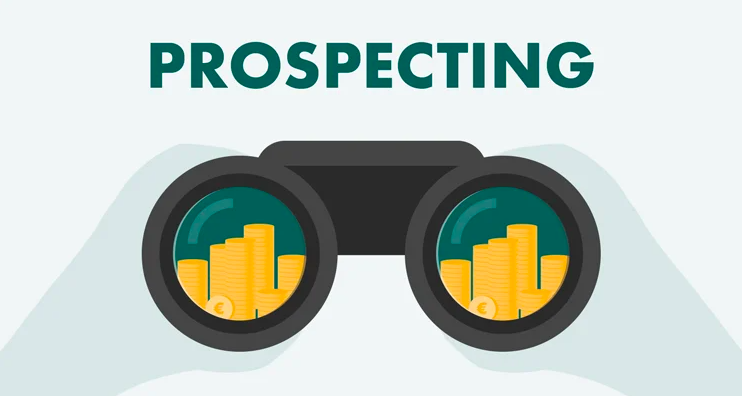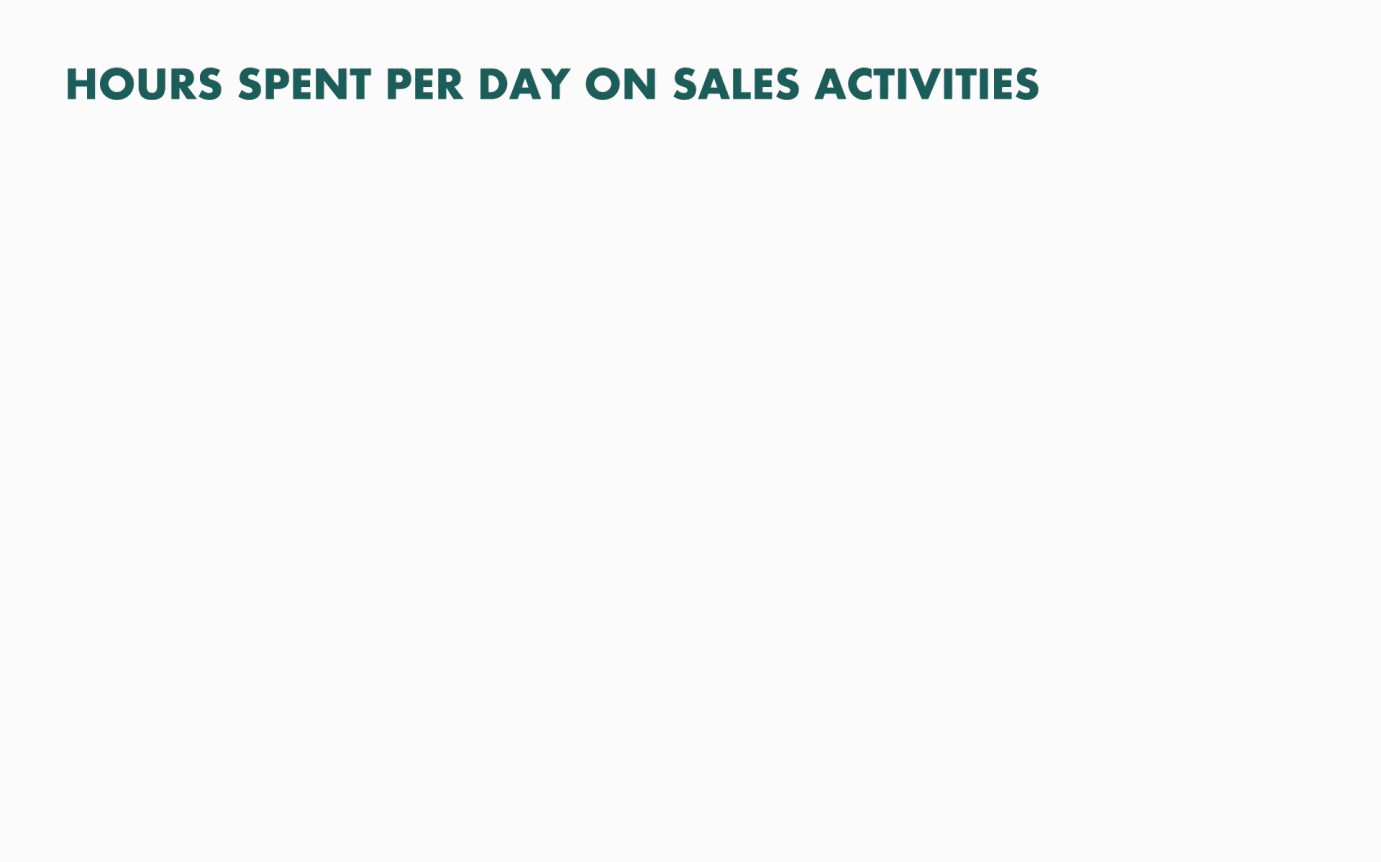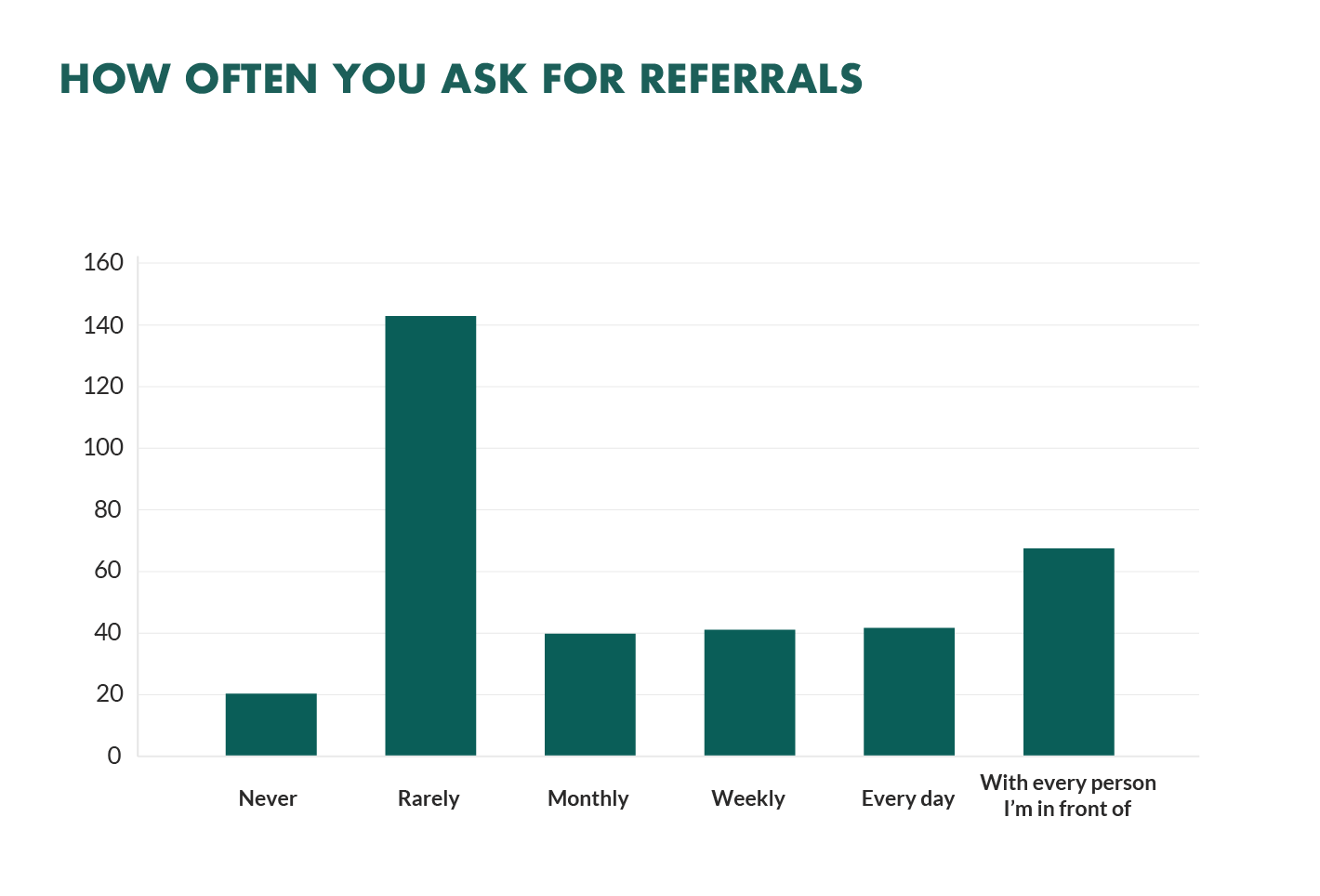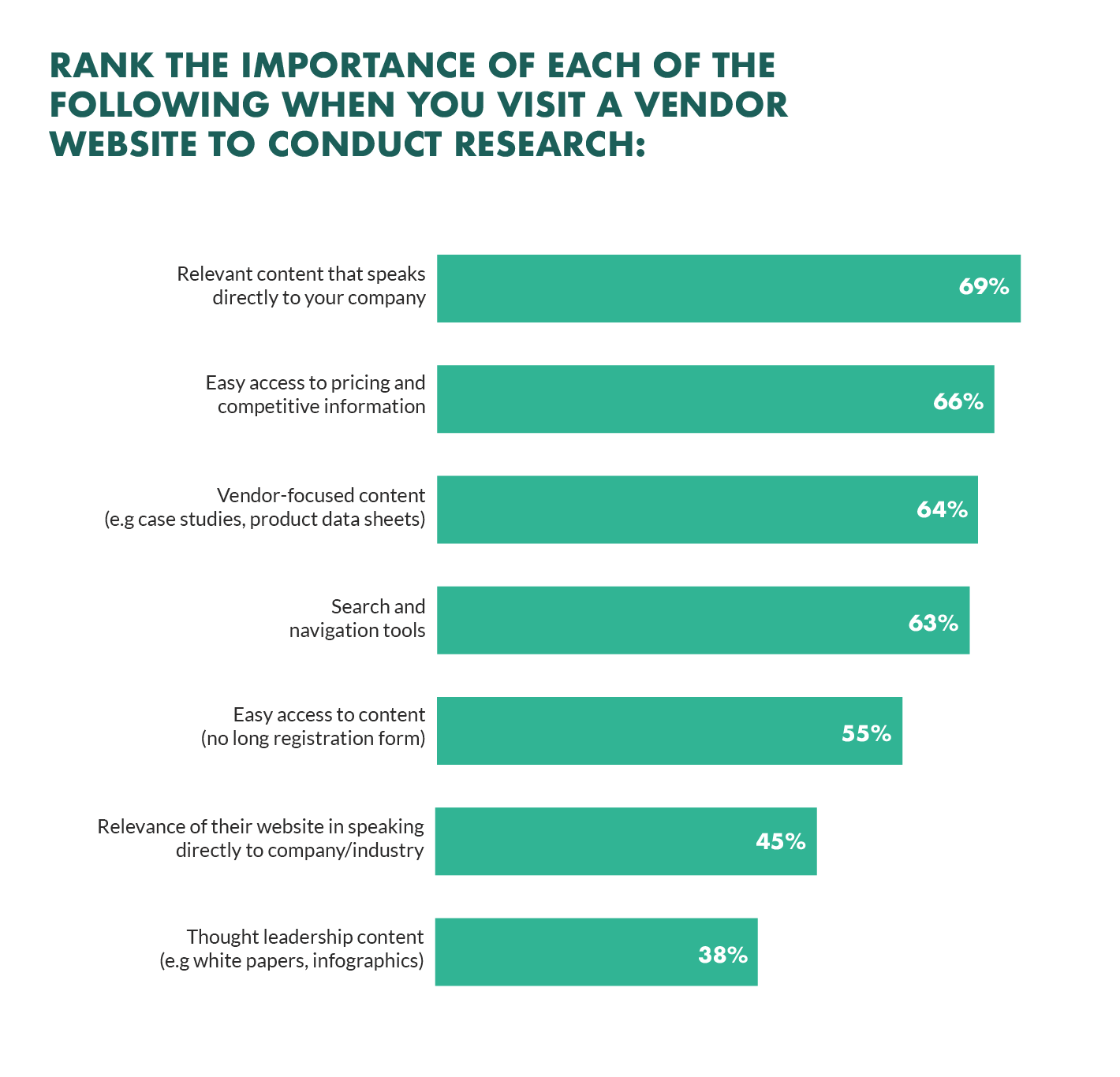10 Proven Strategies For Sales Professionals

Post summary:
- If you work in sales, then you know that prospecting isn't easy. In fact, almost half of sales reps admit that they find prospecting the most difficult part of the sales process.
- In order to keep a sales pipeline full of leads, you have to prospect. When done correctly, prospecting is the fastest way to increase both your conversion rates and closing rates.
- But, where do you start? Here, we share 10 trending sales prospecting tips that will change the way you approach finding new leads and turn you into lead-generating powerhouse.
Prospecting is one of the key stages of the sales process.
And, yet, it is also one of the more difficult ones.
In fact, 42% of sales reps named prospecting as the most challenging stage of the sale process, a report says. So, why is it so challenging?
Well, let’s admit – prospecting is not as exciting as closing a deal. Therefore, it is often postponed for when all the “important things” are done.
But without a sales pipeline full of good quality leads, no other new sales are going to happen. That’s why it’s crucial to understand that prospecting kick-starts the entire sale and determines, to a great extent, whether or not the deal is going to be sealed.
The math is simple: the more prospects you generate, the more chances to close a sale you have, as every prospect equals an opportunity.
And even though traditionally it’s the marketing department that has been tasked with generating leads for sales, it doesn’t mean that sales should stop their own prospecting efforts and wait for the leads to come pouring in.
Salespeople still have to embrace the traditional way of prospecting and self-generate leads.
But before we move on to discussing the smart ways to prospect, let’s take a look how the prospecting game has changed.
The new reality: buyers take over the sales process
Today’s buyers have become very independent and are playing “hard to get”.
Before making any contact with a sales person, buyers are doing a bit of prospecting of their own.
According to a recent study by CSO Insights, 45% (almost half!) of prospects admitted they wanted to evaluate their needs and look for solutions themselves, before contacting any sales person.
And how do they do that? Yes, you guessed it right – the Internet! A staggering 95% of B2B buyers research companies online before making purchases. And 53% of B2B buyers turn to social media to make buying decisions.
What it all means is that salespeople are losing their grasp on the sale. It seems like they are no longer in the picture, and that’s a bit scary for the future of sales professionals.
But … things are not that bad, because those you seek are actually out there seeking you!
In fact, 91% of prospects don’t mind engaging with a sales rep in the early stages of their buying journey, including 34% of new buyers who are particularly interested in engaging with a sales person early on.
This means that you, as a sales person, have all the chances to influence the sale and steer it to the right direction in the early stages. So how do you do that?
- The first thing you need to do is be there for a buyer when they need you. The research shows that it is during the consideration stage (after having researched and shortlisted the options) that 60% of B2B buyers want to contact a sales rep.
- Another way of taking hold of the sales wheel is by simply initiating the first contact! As 50% of buyers choose the vendor that reaches out or responds to them first, proves the Xant.ai Lead Report. Reaching out is all that is needed for more than 85% of buyers to say “yes” to a meeting with a sales rep.
Why commitment to prospecting is key?
There’s one more fact you need to acknowledge about prospecting – leads won’t just fall into your lap. You’ve got to take action for something to happen.
Just as you would block a consistent time in your calendar for your workouts every day, it’s just as important to book a consistent time in your calendar to prospect every day.
Research demonstrates that 81,6% of top performing salespeople spend 4 hours or more per day on sales-related activities.

And since prospecting isn’t always the most fun of activities, booking this time with yourself will go a long way in ensuring that this activity happens on a regular basis.
The benefits of such a discipline are plenty: a sales pipeline full of leads, higher chances of conversion and better win rates!
10 trending tips for sales prospecting
Prospecting is one of the most time-consuming and challenging tasks that salespeople face. But, if done right, it can be an exciting experience that polishes your sales skills and allows you to find the potential customers who are the perfect fit for your offer.
1. Create an ideal prospect profile
There are many different types of people, industries and company sizes out there. How do you know where to start?
Take some time to find out what your ideal customer profile looks like and do some research in your own database. Who are your top five customers? Who are your worst five customers? Who are your most profitable customers? Which ones are the least profitable? Create profiles for each of these groups.
Don’t assume that just because a company is in your database that they fit your ideal customer profile. Ironically, new studies show that half of your prospects (50%) are not a good fit for what you want to sell.
It’s instrumental to also think in the “problem-solution way”, i.e. identify what pain points your ideal customers may have and how does your product solve them?
Once you have done this homework, you can use both the profile list and your existing company list to find other businesses which match these criteria. This tactic, also known as account-based marketing, will help you focus on the bigger fish in the sea.
2. Identify ways to meet your ideal prospects
Start by analyzing where you met your "best" customers. In most cases, your "best" customers are your most profitable customers. Was it at a trade show or a seminar? Or via a referral? This will help you single out your most “lucrative” places to hang out at.
Now think in terms of industry events or social organizations: what events or activities are your ideal prospects likely to attend or be active in?
Finally, think in terms of their digital presence: what social media channels, newsfeeds and other digital publications are they likely to use or visit?
For example, if you’re in B2B sales, chances are most of your potential customers are on LinkedIn. This means you need to establish a strong presence there too. LinkedIn allows you to not only find out almost everything about a prospect, but also to warm up your first approach through a mutual connection.
All this information will help you map out an action plan where to show up at the right places to meet your potential customers.
3. Actively work on your call lists
You’ve got the cold call list and the warm lead list, and even a lost lead list. Prioritize each list and then take some time each day to call the people on your lists.
First of all, don’t underestimate the power of a phone call! Research shows that 69% of buyers accepted a call from new salespeople in the past 12 months, and 27% of sellers admit that making phone calls to new contact is very/extremely effective.
Another tip is to write down a list of open-ended questions for all your prospect lists.
Did you know that asking between 11–14 questions during a lead call will translate to 74% greater success?
What you need is not a scripted sales pitch, but a dialogue during which you can learn about their pain points, needs and wishes, and most importantly – where they are in their decision process. If you can maintain an interesting conversation, qualifying leads becomes much easier.
What are they looking for? Do they have a specific solution to their problem in mind? Do they have enough information? Is there any information you can send them? Perhaps, you can invite them to a webinar or a seminar that you’re hosting.
Call to touch base again in 6 weeks or 6 months. In the end, it’s all about keeping in touch. By working the list consistently, you’ll be able to turn lukewarm leads into warmer leads and, finally, into hot leads.
4. Send personalized emails
Don’t think that email, as a sales tool, is dead.
Quite the opposite – it’s alive and kicking, as 80% of buyers say they prefer to be contacted by sellers via email, claims Rain Group research.
But there is one thing that’s dying out as we speak – mass or bulk emails.
With a 26% higher open rate than mass emails, personalized emails now run the show!
First of all, make sure that the content is personalized to each prospect’s needs. Your task is to impress them with how much you know about their company or industry. Make sure the content is specific and addresses the needs of a particular prospect.
Second, in order for your leads to open and read your email, make sure that your email looks well on mobile devices, as more than half of all emails are read on-the-go. In fact, emails that are optimized for mobile devices generate 15% higher click through rates than those not optimized.
Finally, in order for your sales email to hit the mark, you need to know what to write and how. To help you, we have created the 12 sales ready email templates guide that is full of sales tips and tricks.
Simply download the guide and you will learn: how to increase sale productivity through emails; what are the best times to send an email to new prospects; examples of subject lines that will get your email opened; and 12 sales email templates to increase response rates!
5. Ask for referrals
Nothing is better than a happy customer, because happy customers spread the happy word.
So, it’s no surprise that 91% of B2B buyers are influenced by word-of-mouth when making their buying decision, while the referral-based sale closing ratio stands at 50% to 70%.
This is a free-of-charge opportunity you simply can’t afford to miss – ask your customers for referrals!
Yet, the sad truth is that 40,4% of salespeople rarely do that ☹

The best time to ask for a referral is immediately after the sale is made because this is when the experience is still fresh in the customer’s mind. If the experience was positive, a massive 83% of customers would be happy to provide a referral!
It’s also important to keep in touch with your existing customers to ensure that they are still happy with your product/service and with your company.
Set up a sales meeting to just to say hello and see how things are going. Send them invitations to events, share whitepapers, and other content that you think would be valuable for their business – making sure you stay top of mind!
6. Become a know-it-all
But, in order to get those referrals coming in, you need to become more than a seller or a vendor. You need to be a trustworthy expert and a provider of solutions.
This means that you need to know a lot about:
- The industry that you’re targeting. According to a recent research, 51% of top performing salespeople report being seen as “an expert in their field” and only 7% of top performers reported being seen as “a salesperson”.
- Your potential customers. Everyone likes attention and to be taken seriously. That’s why you need to know a lot not only about their needs and concerns, but also their victories and achievements. Research your leads like a true detective and use that knowledge to reinforce your value proposition.
- Your own product. Did you know that 54% of prospects want to find out how the product works on the first call? So, you need to be ready to discuss the key functionality of your product, answer any questions and give examples.
7. Build your social media presence
If you haven’t figured it out yet, social media is here to stay.
Twitter, Facebook, LinkedIn, YouTube are all channels that your potential buyers visit to find information. So, if you’re not there, somebody else will take your place!
Let me share some social selling statistics with you:
- 91% of B2B buyers are now active and involved in social media (Source)
- 84% of senior executives use social media to support purchasing decisions (Source)
- 65% of salespeople who use social selling fill their pipeline (Source)
- Using social selling tools can increase win rates by 5% and deal size by 35% (Source)
The key message?
Social selling works!
If you’re in doubt of where to start, start easy and take baby steps. Create a profile on one of the social media channels which you think are important in your work.
If you’re B2B, make sure you’re on LinkedIn (or Xing). Investing in your LinkedIn profile is very important, as 82% of buyers claim that they look up vendors on LinkedIn before replying to their outreach efforts.
Remember that a social media presence adds to your prospecting arsenal and doesn’t replace your other prospecting activities.
8. Send relevant content to prospects
While we all know that content helps salespeople to take prospects down the sales funnel quicker, what we may not know is what type of content to send and when.
To answer this question – think what you’re trying to achieve during the prospecting stage. You want your potential buyer either to pay attention and give you a chance to meet or move to the next stage, right?
This means that the content you send should address specific situations and pain points of that prospect. Because, let’s face it – nobody will listen to you if you aren’t going to talk about them. 😉
Sadly, way too often this is not the case! Much of the content produced by companies around the world focuses solely on their own products, features, and services – rather than focusing on their potential customers’ pain points.
This means – quit sending out content that talks about how great you are and how great your company is!
With 69% of buyers craving for research data that is relevant to their area of business and 89% favoring the content “that made it easier to show ROI”, you have to give your prospects solutions and value through your content.
The Demand Gen’s B2B Buyer’s Survey Report gives the following ranking of a vendor’s content:

Show that you understand where they are in the buying process, what their challenges are and provide knowledge, ideas and insights that move them further in the buying process.
9. Demonstrate your sales skills in video format
This is hands down the most trending tip for sales prospecting and something you may not yet tried!
The latest trends point to the rise of the video both as a marketing and sales outreach tool.
And I not talking about fancy corporate demo videos with unnaturally smiling customer service agents and model-looking businessmen shaking hands incessantly in each and every corner.
I am talking about simple amateur videos, where you, as a sales rep, can show your face and introduce yourself, offer information, quote numbers, and give your best sales pitch. All the usual things but done – differently.
After all, people buy from people. So, show them the real you!
Videos in general are a powerful way to convey information in an enticing and informative way. Just look at these numbers:
- 7 in 10 B2B buyers admit to watching a video at some point during their buying process,
- 60% of B2B buyers said that YouTube and Vimeo are very or somewhat important in their purchasing journey,
- 96% of consumers find videos helpful when making purchase decisions online,
- Prospects who view a video of a product are 85% more likely to buy.
Why not taking advantage of this trend?
And if your company’s marketing team creates videos, not using them in sales is a crime nowadays!
How about sending demo videos that effectively sum up how your product works and what benefits it gives during the awareness and interest stage, followed by more detailed how-to functional videos during the consideration and justification stages?
Want to improve your email marketing strategy? Videos can help you here too! Did you know that by adding a video in your email, you can increase open-to-reply rates by as much as 8X!
So, to appeal to an increasingly visual audience of buyers it’s time to go into full video mode.
10. Follow up, follow up, follow up
Finally, the fruits of your labor generally do not show up on the first contact. Moving a lead from lukewarm to hot requires work. This means sending follow up emails, making multiple phone calls, forwarding additional information, and other follow-up activities.
Timely follow-ups are reliable ways to build a relationship and demonstrate your determination and trustworthiness. Anything – from casual “just checking in” or a “thank you” note, to sending a draft proposal or product specs on time – goes a long way in increasing your chances of making a sale.
Research shows that if you haven’t heard back on your email in 24 hours, it’s vital to follow up, as “you have a 21% chance of getting a reply to your second email, if the first goes unanswered.”
However, managing follow-ups can be a challenge, that’s why using the capabilities inside your CRM system will help you stay on track.
How do you prospect for new leads? Feel free to share your tips in the comments section below.

Comments
Post a Comment